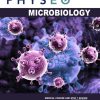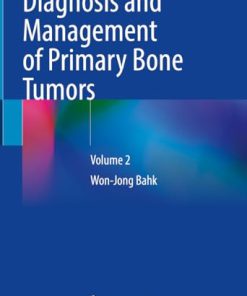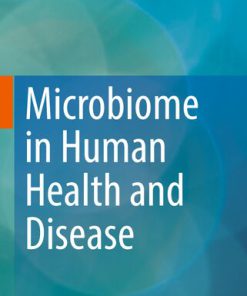Forest Microbiology Volume 1 Tree Microbiome Phyllosphere Endosphere and Rhizosphere 1st Edition by Fred O Asiegbu, Andriy Kovalchuk ISBN 9780128225424 0128225424
$50.00 Original price was: $50.00.$25.00Current price is: $25.00.
Forest Microbiology Volume 1 Tree Microbiome Phyllosphere Endosphere and Rhizosphere 1st Edition by Fred O Asiegbu, Andriy Kovalchuk – Ebook PDF Instant Download/Delivery: 9780128225424 ,0128225424
Full download Forest Microbiology Volume 1 Tree Microbiome Phyllosphere Endosphere and Rhizosphere 1st Edition after payment

Product details:
ISBN 10: 0128225424
ISBN 13: 9780128225424
Author: Fred O Asiegbu, Andriy Kovalchuk
Forest Microbiology, Volume One: Tree Microbiome: Phyllosphere, Endosphere and Rhizosphere places an emphasis on the microbiology of leaves, needles, stems, roots, litter and soil. This comprehensive title is split into five sections, including the phyllosphere microbiome, endosphere, rhizosphere, archaea, viruses in forest ecosystem and microbiota of forest nurseries and tree pests, challenges and potentials. Microbial communities associated with various host trees and different tree tissues are compared, and generalists and specialists among tree-associated microbes are identified. In addition, biotic and abiotic factors determining the composition and the structure of forest tree microbial communities are presented, along with the concept of microbial ‘hubs.’
Together, the book’s editors have 25 years’ worth of experience teaching and conducting research on forest microbiology, making this an essential read for any scientist interested in the forest microbiome.
Addresses the microbiology of living organs of forest trees including needles, leaves, stems and roots
Highlights the potential impact of microbiota inhabiting forest trees on the health and fitness of, and disease progression in, forest biomes
Focuses on the phyllosphere, endosphere and rhizosphere forest microbiome
Forest Microbiology Volume 1 Tree Microbiome Phyllosphere Endosphere and Rhizosphere 1st Edition Table of contents:
Chapter 1 An introduction to forest biome and associated microorganisms
1: Introduction
2: Forest biome
3: Forest trees and their symbionts
4: Microbiome: The three domain system
5: Fungi: Morphological and structural features
5.1: Classification of the fungal kingdom
6: Bacteria
7: Protists
8: Viruses
9: Ecology, biochemistry, physiology, and biotechnological features of microorganisms
10: Lifestyles of microbiome
10.1: Fungi as saprotrophs
10.2: Fungi as endophytes
10.3: Fungi as mutualists (mycorrhiza)
10.4: Fungi as tree pathogens (necrotrophs, biotrophs, or hemibiotrophs)
11: Lifestyles of bacteria, archaea, and protists
12: Coevolution of plants (trees) and their microbial symbionts
Chapter 2 Wood as an ecological niche for microorganisms: Wood formation, structure, and cell wall composition
1: Introduction
2: Wood formation
2.1: Cambium and wood formation
2.2: Seasonality of wood formation
3: Principles of wood anatomy
3.1: Sectioning planes
3.2: Softwoods
3.3: Hardwoods
3.4: Pits
4: Ultrastructure of wood cell walls
5: Chemical characteristics of wood cell walls
5.1: Major cell wall components
5.2: Molecular architecture and distribution of chemical components
6: Future perspectives
Chapter 3 Methods for studying the forest tree microbiome
1: Introduction
2: Traditional methods for studying phyllosphere and endophytic microbiota
2.1: Culture dependent-based isolation methods
2.2: Histological methods
3: Biochemical methods (microbiota—bacteria and fungi)
3.1: Metabolic activity
3.2: Methods to investigate fungal secondary metabolites
3.3: “Phenomics” methods
3.4: Use of nonnucleic acid approaches (metaproteomics and metabolomics) in microbial community profiling of environmental samples
4: High-throughput or next-generation sequencing: Principles, concept, and applications
4.1: Amplicon sequencing
4.2: 16S sequencing principle and bias
5: Data analysis: Clustering, sequence identification, and operational taxonomic units
5.1: Data quality filtering
5.2: Chimera filtering
5.3: Clustering
5.4: Taxonomic identification
5.5: Fungal guild
5.6: Data analysis
6: RNA-seq and DNA GeoChip for microbiome analyses
6.1: RNA-seq for microbiome study
6.2: DNA GeoChip for microbiome analysis
6.3: GeoChip: Data generation, normalization, and analysis
7: Metagenome and metagenomics
7.1: Metagenome-wide association study
8: Choice of methods for microbiome studies: Marker gene, whole metagenome, or metatranscriptomic analysis
8.1: Marker gene analysis
8.2: Whole metagenome analysis
8.3: Metatranscriptome analysis
9: Technical considerations and constraints
Chapter 4 Abiotic factors affecting the composition of forest tree microbiomes
1: Introduction
2: The impacts of water: Flooding and drought
2.1: Phyllosphere microbiota and drought
2.2: Effects of flooding on the phyllosphere microbiome
2.3: Drought tolerance requires a beneficial microbiome in the rhizosphere
2.4: Increasing water content in the rhizosphere benefits anaerobic and copiotrophic microbes
3: Impact of site factors
3.1: Nutrient availability and pH characterize rhizosphere communities
3.2: Site-specific environment defines phyllosphere microbiome
4: The effects of pollution on a microbiome
4.1: Air pollution
4.2: Nitrogen and phosphorus deposition
4.3: Particulate matter
4.4: Soil pollution
4.5: Combined effects of pollutants in urban areas
4.6: Bidirectional effects of plant or microbiota VOCs
5: Global warming and elevated CO2
5.1: Rhizosphere
5.2: Phyllosphere
6: Effects of genetic modification of trees
7: The effects of forest management on a tree microbiome
7.1: Case studies of the effect of forest management on microbiomes
8: Concluding remarks
Chapter 5 Interspecific interactions within fungal communities associated with wood decay and forest trees
1: Introduction
1.1: Fungal community species assemblage, diversity, and abundance
1.2: Ecological aspects of fungal interactions in dead wood
1.3: Cofungal interactions within living trees
2: Wood decay, colonization, and methods for classifying interspecific fungal interaction
3: Mechanisms of combative interactions (mycoparasitism, competition, hyphal interference, antibiosis)
4: Types of response to competitive or combative interactions
4.1: Morphological responses to competitive interactions
4.2: Physicochemical responses including the production of volatile organic compounds (VOCs)
4.3: Biochemical responses
4.4: Transcriptional responses
5: Interaction outcome: Replacement, deadlock, metabiosis/antibiosis
6: Impact of biotic and abiotic factors on the outcome of interspecific fungal interactions
7: Fungal succession as an interaction outcome
8: Challenges and constraints in interspecific interaction
Chapter 6 The phyllosphere mycobiome of woody plants
1: Introduction
2: Epiphytic fungi
3: Pathogenic and endophytic fungi
3.1: Pathogenic fungi
3.2: Endophytic fungi
4: “Domestication” of endophytic fungi
Chapter 7 Tree leaves as a habitat for phyllobacteria
1: Introduction
2: Leaf surface as an extreme environment
3: Phyllobacterial community composition
4: Role of the phyllobacterial community
5: Conclusions and future perspectives
Chapter 8 Microbiome of reproductive organs of trees
1: Composition of the microbiome of reproductive organs
2: Vertical transmission of the microbiome of reproductive organs and microbiome maternal effects on trees
2.1: Vertical transfer through seeds and pollen
2.2: Microbiome between parent and offspring trees—Maternal effects on trees
3: Microorganisms of seed from soils
4: The relationship between the flower microbiome of trees, insect vectors, pollinators, and other factors
4.1: Floral microbiome
4.2: Microbiome and plant-feeding insects
5: Microbial evolutionary and ecological functional impacts
5.1: Microbial evolution and ecology of the reproductive microbiome
6: Conclusions and future study
Chapter 9 Bacterial biota of forest trees
1: Introduction
1.1: Aims
2: Composition and function of bacterial biota of the above- and below-ground compartments of forest tree species
2.1: Foliage
2.2: Stem
2.3: Root, rhizosphere, soil, and litter
3: Comparing bacterial biota composition across tree species and forest biomes
4: Conclusions and future research priorities
Chapter 10 Fungi inhabiting woody tree tissues
1: Introduction
2: Endophytes
3: Fungi inhabiting living woody tissues: Are Basidiomycetes underrepresented or not yet discovered?
4: Fungi causing tree diseases
4.1: Lifestyle switch from endophytic to pathogenic
5: Fungi in woody tissues of conifers
6: Fungi inhabiting woody tissues of deciduous trees
6.1: Fungal species in Quercus tissues
6.2: Fungal species in Fagus tissues
6.3: Fungal species in Alnus tissues
6.4: Fungal species in Betula tissues
6.5: Fungal species in Populus tissues
6.6: Fungal species in Eucalyptus tissues
7: Fungal vascular wilt pathogens
7.1: Ceratocystis vascular wilt
7.2: Fusarium vascular wilt
7.3: Ophiostoma vascular wilt
7.4: Verticillium vascular wilt
8: Wood-decay fungi
8.1: White rot fungi
8.2: Brown rot fungi
8.3: Soft rot fungi
9: Conclusion
Chapter 11 Dark septate endophytes of forest trees
1: Historical perspectives on dark septate endophytes
2: Endophytes and forest trees
3: Ecology of DSE
4: Beneficial effects of DSE on their hosts
5: Phialocephala fortinii s.l.-Acephala applanata species complex
6: Changes in PAC/DSE communities
7: DSE and host interactions in harsh environments
8: DSE-tree host interactions
9: DSE-mycorrhiza-host interactions
10: DSE and metabolites
11: DSE-tree interaction under changing environment
12: Future studies needed
Chapter 12 Nature and characteristics of forest soils and peat soils as niches for microorganisms
1: Forest soils and peat soils defined
2: Characteristics of forest soils
3: Physicochemical properties of forest soils
4: Mire and peat formation
5: Peat types and decomposition
6: Drained peatlands and peat
Chapter 13 Fungal community of forest soil: Diversity, functions, and services
1: Introduction
2: Fungal community structure
2.1: Biotic and abiotic drivers of soil fungal communities
2.2: Impact of disturbances on soil fungal communities
2.3: Biogeography and spatial distribution across different scales
3: Roles of soil fungi in forest ecosystems
3.1: Soil fungi and drought
3.2: Soil fungi and decomposition
3.3: Soil fungi and nutrient cycling
4: Changing roles of soil fungi in different biomes
5: Soil fungi and forest management in a changing world
5.1: Restoration activities, plantation, and fungal inoculation in response to global change
5.2: Nitrogen deposition, liming, and other fertilization impact
5.3: Thinning, harvesting, and residues removal
Chapter 14 The influence of mycorrhizal fungi on rhizosphere bacterial communities in forests
1: Forest soil as a microbial landscape
1.1: Fungal influences on nutrient and carbon availability through decomposition
1.2: Mycorrhizal fungal influences on rhizodeposition
1.3: Other chemical and physical changes in the rhizosphere influenced by mycorrhizal fungi
2: Interactions between mycorrhizal fungi and rhizosphere bacteria
2.1: Community structure of rhizosphere bacteria associated with ectomycorrhizal fungi
2.2: General effects of fungi on bacterial functional groups
3: Conclusions
Chapter 15 Pathobiome and microbial communities associated with forest tree root diseases
1: Diverse drivers of microbial change in plants
2: Pathobiome
3: Soil microbiomes
4: Plant-pathogen-microbe interactions in disease-suppressive soils
5: Role of metabolites from bacteria-fungal interactions on plant disease development
6: Plant infections by fungal pathogens result in changes in beneficial taxa
7: Changes in fungal diversity as a response to root pathogens
8: Changes in bacterial diversity as a response to root pathogens
9: Microbiomes linked taxa to the pathobiome
10: Impact of natural secondary metabolites on pathobiome composition
11: Microbial changes in other anatomic regions of trees
12: Considerations
Chapter 16 Microbiome of forest soil
1: Introduction
2: Microbiome in a tropical peatland forest
2.1: Bacterial diversity in a tropical peatland forest
2.2: Bacterial composition in a tropical peatland forest
2.3: Fungal diversity in a tropical peatland forest
2.4: Fungal composition in a tropical peatland forest
3: Microbiome in a boreal peatland forest
3.1: Bacterial diversity in a boreal peatland forest
3.2: Bacterial composition in a boreal peatland forest
3.3: Fungal diversity in a boreal peatland forest
3.4: Fungal composition in a boreal peatland forest
Chapter 17 Mycobiome of forest tree nurseries
1: Introduction
2: Bare root and container seedling production
2.1: Techniques in container seedling production
2.2: Disease pressure in nurseries
3: Mycobiome as disease agents of forest nursery
3.1: Seed pathogens and damping-off
3.2: Root dieback
3.3: Gray mold
3.4: Phytophthora spp.
3.5: Scleroderris canker
3.6: Sirococcus blight
3.7: Sphaeropsis blight (Diplodia blight)
3.8: Dothistroma needle blight
3.9: Snow blight Phacidium infestans and brown felt blight (black snow mold) Herpotrichia juniperi
3.10: Needle diseases
3.11: Powdery mildews and leaf spots
3.12: Rust diseases
4: Mycobiota of forest nursery
4.1: Endophytic and saprotrophic mycobiota
4.2: Potentials of mycorrhizas in nursery production
4.3: Saprotroph communities pose a risk in nurseries
4.4: Endophytes in rhizosphere and phyllosphere may promote seedling health
5: Control approaches to minimize pathogenic infections in forest nursery
5.1: Alternatives for pesticides are needed
5.2: Reduction of natural inoculum sources
5.3: Seedling management and biostimulants
5.4: Hygiene
5.5: Chemical control of diseases
6: Impact of pesticides (fungicides) on mycobiota of forest nursery
7: Concluding remarks
Chapter 18 Microbiome of forest tree insects
1: Introduction
2: Insects as vital components of forest ecosystems
3: Ecological roles of insects in forest ecosystems
3.1: Ecosystem cycling and herbivory
3.2: Pollination
3.3: Predation/parasitism
3.4: Decomposition: Organic waste
3.5: Seed dispersal
3.6: Insects as a key link in the food chain in the forest
3.7: The detrimental roles of insects in the forest
4: Classification of forest insects
5: Microbiome of diverse forest insect orders
5.1: Microbiome of Hemiptera (bugs)
5.2: Microbiome of Lepidoptera (moth and butterflies)
5.3: Microbiomes of Coleoptera (beetles)
5.4: Microbiome of Isopteran (termites)
5.5: Microbiome of Diptera
6: Functional roles of insect symbionts
6.1: Functional roles of bacterial symbionts of insects
6.2: Functional roles of fungi associated with insects
6.3: Functional roles of viruses associated with insects
7: Transmission route in insects
7.1: Fungal transmission route in insects
7.2: Bacterial symbionts and transmission routes in insects
7.3: Viral transmission route in insects
8: Interactions of insect microbiomes with forest trees and their environment
9: Challenges and constraints in the study of the insect microbiome
Chapter 19 Archaea as components of forest microbiome
1: What are Archaea
1.1: The three domains of life
2: Archaea in boreal forests
2.1: Methanogens in boreal peatlands
2.2: Crenarchaeota and methanogens in rhizospheres
3: Evolving taxonomy of methanogens and Crenarchaeota
3.1: From Crenarchaea to Thaumarchaeota
3.2: The TACK superphylum
4: Archaea in alpine forests
5: Archaea in tropical forests
6: Archaea adapting to environments causing energy stress
6.1: Ammonium oxidizers in forests
6.2: Methane oxidizers in forests
7: Conclusions
Chapter 20 Viruses as components of forest microbiome
1: Introduction
2: Plant viruses
2.1: Introduction to plant viruses
2.2: Taxonomic diversity
2.3: Host ranges
2.4: Economic importance of viruses in forest trees
2.5: Case example: Birch leaf roll disease—New culprit revealed by HTS
2.6: Viroids: Subviral agents smaller than any known viruses
3: Entomopathogenic viruses
3.1: Low impact on insect populations, but still useful
3.2: Nuclear polyhedrosis viruses as biological control agents
4: Fungal viruses
4.1: Fungi are hosting a diverse group of viruses
4.2: Intracellular lifestyle has consequences
4.3: Case example: Effects of viruses on Dutch elm disease
4.4: Case example: Control of a fungal disease by viruses
4.5: Viruses of root rot pathogens
4.6: Viruses of mycorrhizal (mutualistic) fungi
5: Bacterial viruses
5.1: The most common biological entities
5.2: Phage taxonomy
5.3: Surface-bound microbial communities
5.4: Case example: Interactions of bacteria and phages on horse chestnut
5.5: Case example: Biological control of Xylella fastidiosa by bacteriophages
6: Viruses of oomycetes: Examples from the genus Phytophthora
7: Complex host interactions shape the ecology of forest viruses
Chapter 21 Translational research on the endophytic microbiome of forest trees
1: Introduction
2: Translational research of forest tree microbiomes
2.1: Gap 1. From knowledge generation to interpretation
2.2: Gap 2. From interpretation to implementation
2.3: Gap 3. From implementation to impacts
3: Concluding remarks
Chapter 22 Forest microbiome: Challenges and future perspectives
People also search for Forest Microbiology Volume 1 Tree Microbiome Phyllosphere Endosphere and Rhizosphere 1st Edition:
wake forest microbiology lab
forest microbiology pdf
forest microbiology ppt
forest microbiology notes
forest microbiology tree diseases and pests
Tags: Fred O Asiegbu, Andriy Kovalchuk, Forest Microbiology, Tree Microbiome, Phyllosphere
You may also like…
Medicine - Health-Related Professions
Medicine - Anatomy and physiology
Uncategorized
Biology and other natural sciences - Ecology
Children's Books - Science
Education Studies & Teaching - Studying & Test Preparation
Biology and other natural sciences - Microbiology











